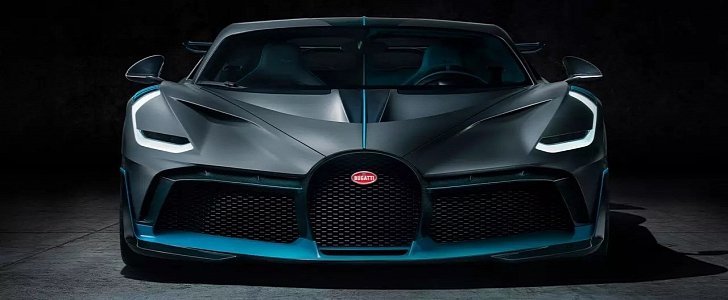It was September 2018 when Stephan Winkelmann made a cryptic comment about the future of Bugatti, but more importantly, about how hard it’ll be for the quad-turbo W16 to stay alive through ever-stringent emissions regulations. The chief exec also made a business case for hybridization, which is the perfect compromise when you look at the bigger picture.
More recently, Winkelmann said that the sixteen-cylinder blunderbuss “has an opportunity for the future.” The head honcho of the Volkswagen Group “knows the value of a W16 engine” as well, and if Bugatti were to cancel the gentle giant, it’d be a considerable loss for the automotive world.
Without further beating around the bush, Winkelmann told Autocar.co.uk that the quad-turbo leviathan could last “another decade.” The reason Bugatti is willing to upgrade the design instead of switching to a V12, V10, or V8 is pretty simple. “Veyrons are going up [in value]. I don’t have to be a wizard to forecast that this will happen to the Chiron.”
Winkelmann reiterates that hybridization has a place in there as well, but the battery and e-motor can’t hold a candle to the W16 in terms of collectible-ness. There’s no replacement for displacement as we all know, but hybridization would help the W16 in two ways. First things first, short bursts of electrical assistance would translate into additional performance. And secondly, an all-electric mode or various efficiencies brought to coasting and idling would cut back on emissions, the Achilles heel of the 8.0-liter engine.
For reference, the Chiron emits 516 grams of carbon dioxide per kilometer in the combined driving cycle, translating to 22.5 liters of high-octane dinosaur juice per 100 kilometers. Heading over to the United States of America, the Environmental Protection Agency lists the Chiron with 11 miles to the gallon combined, matching the Lamborghini Aventador.
The Raging Bull of Sant’Agata Bolognese also plans to hybridize its V12 and V10 super sports cars, and the first step in this direction has already been taken by a limited-edition model. Sián FKP 37 is the name of the Aventador-based culprit that features a supercapacitor and an e-motor integrated into the semi-automatic transmission with seven forward ratios.
On that note, if Lamborghini can imbue efficiency and performance into the automaker’s 6.5-liter V12, then Bugatti will surely be capable of keeping the W16 alive and kicking for a few more years.
Without further beating around the bush, Winkelmann told Autocar.co.uk that the quad-turbo leviathan could last “another decade.” The reason Bugatti is willing to upgrade the design instead of switching to a V12, V10, or V8 is pretty simple. “Veyrons are going up [in value]. I don’t have to be a wizard to forecast that this will happen to the Chiron.”
Winkelmann reiterates that hybridization has a place in there as well, but the battery and e-motor can’t hold a candle to the W16 in terms of collectible-ness. There’s no replacement for displacement as we all know, but hybridization would help the W16 in two ways. First things first, short bursts of electrical assistance would translate into additional performance. And secondly, an all-electric mode or various efficiencies brought to coasting and idling would cut back on emissions, the Achilles heel of the 8.0-liter engine.
For reference, the Chiron emits 516 grams of carbon dioxide per kilometer in the combined driving cycle, translating to 22.5 liters of high-octane dinosaur juice per 100 kilometers. Heading over to the United States of America, the Environmental Protection Agency lists the Chiron with 11 miles to the gallon combined, matching the Lamborghini Aventador.
The Raging Bull of Sant’Agata Bolognese also plans to hybridize its V12 and V10 super sports cars, and the first step in this direction has already been taken by a limited-edition model. Sián FKP 37 is the name of the Aventador-based culprit that features a supercapacitor and an e-motor integrated into the semi-automatic transmission with seven forward ratios.
On that note, if Lamborghini can imbue efficiency and performance into the automaker’s 6.5-liter V12, then Bugatti will surely be capable of keeping the W16 alive and kicking for a few more years.











